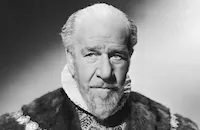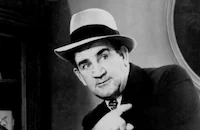Wise Girl

Brief Synopsis
Cast & Crew
Leigh Jason
Miriam Hopkins
Ray Milland
Walter Abel
Henry Stephenson
Alec Craig
Film Details
Technical Specs

Synopsis
To obtain custody of her two orphaned nieces, Katie and Joan, coquettish heiress Susan Fletcher leaves her father's mansion and plunges herself into the bohemian world of Greenwich Village, where the girls reside with their guardian, artist John O'Halloran. By pretending to be an out-of-work actress, Susan ingratiates herself with John, the girls and the rest of the quirky "colony," which includes a boxing sculptor named Mike and Karl Stevens, an alcoholic painter. Although Susan soon learns to love the eccentric John, her concerns for his artistic career and for the well-being of her nieces grow. Without revealing her identity, she tries to talk John into participating in an art contest sponsored by her father, but out of stubborn pride, he refuses. After John loses his sign painting job at Walker's department store and is a failure as a door-to-door vacuum salesman, Susan proposes to him and is about to tell him the truth about herself when authorities from the juvenile aid society arrive and remove the girls. At the custody hearing, both Susan and John plead their cases to a panel of conservative judges, which finally grants custody to the Fletchers. Although they are pampered by the Fletchers, Katie and Joan remain miserable in the mansion until Susan announces her plan to return them to John on condition that he paint an entry in her father's art contest. Forced into jail, John is then starved into painting and renders a striking caricature of Susan and her father. Susan sells the drawing for an impressive sum and is forgiven by John, who happily agrees to become a respected member of the Fletcher clan.

Director
Leigh Jason
Cast

Miriam Hopkins

Ray Milland

Walter Abel

Henry Stephenson
Alec Craig

Guinn Williams
Betty Philson
Marianna Strelby

Margaret Dumont
Jean De Briac
Ivan Lebedeff
Rafael Storm

Gregory Gaye

Richard Lane

Tom Kennedy
Crew
Samuel J. Briskin
Carroll Clark
Denzil A. Cutler
Jack Hively
Kenneth Holmes
Edward Kaufman
Peverell Marley
Charles Norman
Van Nest Polglase
Allan Scott
Allan Scott
Darrell Silvera

Film Details
Technical Specs

Articles
Wise Girl
As the film opens, super-wealthy Simon Fletcher (Henry Stephenson) has hired detectives and lawyers to track down his orphaned granddaughters. The girls are living with their Uncle John O'Halloran (Ray Milland) in a low-rent apartment block in the Greenwich Village neighborhood in New York. Since O'Halloran has refused all offers of money to give up the children, Fletcher's spoiled daughter Susan (Miriam Hopkins) plots to infiltrate the artists' colony, pretending to be broke. She discovers that the children are happy and healthy and that their uncle, a talented painter, drifts through a variety of jobs to keep his family afloat. While trying to survey the situation, Susan (intentionally or not) sabotages his various vocations through a series of wacky encounters. Inevitably, the Juvenile Aid Society comes for the children and holds a hearing which threatens to break up the family.
Wise Girl qualifies as a quirky romantic comedy and certainly its setting is unusual. Though shot on Hollywood soundstages, the film presents a passable depiction of the depression-era Bohemian lifestyle of Greenwich Village residents. When Susan arrives, there is a long panning shot of the shared courtyard of the apartment houses behind an Artists' Exchange Shop. Here dancers, painters, and writers each occupy a corner of the yard as their children dart about freely. While some of the residents of the enclave come off as rude, the film is generally sympathetic and even admiring of these progressive and creative types. Wise Girl is also cleverly self-aware; one way in which the artists earn money is to pose as exaggerated versions of themselves at a Bohemian eatery. Curious uptown High Society types flock to the colorful neighborhood to get an eyeful, so the residents don berets, eccentric frocks, extreme hairdos and world-weary expressions.
Wise Girl is not quite screwball enough to qualify as a genuine "Screwball Comedy," although there are some fine displays of physical comedy: Hopkins manages to be dragged around a boxing ring in one sequence, and in another she is hired to act out an advertising skit in a department store window, turning things into a shambles when her co-star gets too grabby. An opportunity for Capra-style social commentary is passed up during a child custody hearing, although the film sides with the concept of home schooling (or non-schooling to be precise) over the rigid stance of the authorities. In this scene O'Halloran gets his chance to berate the system, saying that society wants to school his nieces so that they "turn out like half the other little beggars in this country. They've got to be all alike ¿ mold #4 for Joan, mold #7 for Katie..." In the same hearing, as part of an I.Q. test for the girls, social worker Mrs. Bell-Rivington (the wonderful Margaret Dumont) asks, "Now, my dear, what is it that goes `quack quack' and lays an egg?," to which the child replies "Joe Penner!", showing that the kids aren't deprived when it comes to attending RKO comedies at the movies!
Ray Milland turns in a deft light comedy performance - a particularly demanding one because the storyline requires him to be stubborn and inflexible; in spite of that he is sympathetic and even charming in the role. Milland shines in a scene in which he attempts selling vacuum cleaners door-to-door. After many refusals he is reduced to asking, "You don't want one of these, do you?" Miriam Hopkins, of course, had already proven her romantic comedy chops in the classic Ernst Lubitsch films Trouble in Paradise (1932) and Design for Living (1933). She is not as effective here, but the screenplay does not contain the same level of sparkling dialogue and director Leigh Jason is certainly no Lubitsch.
Wise Girl screenwriter Allan Scott was a member of the writing teams that fashioned stories for Astaire-Rogers musicals such as Top Hat (1935), Swing Time (1936), and Shall We Dance (1937). RKO staff director Leigh Jason helmed several similarly quirky romantic comedies in the mid-to-late-1930s. Jason got his start directing a few features at Universal near the end of the silent era, then moved on to direct early sound comedy shorts. For RKO he turned out two-reelers with Benny Rubin and Shemp Howard, while at Hal Roach Studios he worked with such comics as Billy Gilbert and Robert Benchley. When he moved into features at RKO, he always populated his casts with colorful supporting players such as Gilbert, Mischa Auer, and (in Wise Girl) James Finlayson. Jason also worked with several up-and-coming comediennes, such as Penny Singleton and Lucille Ball. Aside from Wise Girl, his most well-known comedies are those he made with Barbara Stanwyck, The Bride Walks Out (1936), co-starring Robert Young, and The Mad Miss Manton (1938), with Henry Fonda. In the 1940s Jason directed several comedies and musicals at Columbia Pictures and Eagle-Lion, such as Carolina Blues (1944) and Out of the Blue (1947). Jason finished off his career in television, and with a few low-budget independent films, starring the likes of Arch Hall, Jr. (The Choppers, 1961).
Producer: Edward Kaufman
Director: Leigh Jason
Screenplay: Allan Scott
Story: Allan Scott, Charles Norman
Cinematography: J. Peverell Marley
Film Editing: Jack Hively
Music: Roy Webb
Art Direction: Van Nest Polglase
Cast: Miriam Hopkins (Susie Fletcher), Ray Milland (John O'Halloran), Walter Abel (Karl Stevens), Henry Stephenson (Simon Fletcher), Alec Craig (Dermot O'Neil), Guinn `Big Boy' Williams (Mike Malloy), Margaret Dumont (Mrs. Bell-Rivington), Betty Philson (Joan O'Halloran), Marianna Strelby (Katie O'Halloran).
BW-71m.
by John M. Miller

Wise Girl
Quotes
Trivia
Notes
The working titles of this film were The Indestructible Susan, Female of the Species and Women Have a Way. According to Hollywood Reporter news items, P. J. Wolfson was first slated to produce the film, and Cary Grant was to star. Hollywood Reporter also announced that Viola Brothers Shore was to work with Harold Kusell on a "polish" of the screenplay. Their contribution to the final film has not been confirmed, however. RKO borrowed Miriam Hopkins from Goldwyn for the production. According to Hollywood Reporter, director Leigh Jason hired 500 extras to appear in fight scenes that were shot at the Hollywood Legion Stadium. Hollywood Reporter news items add Harrison Greene, D'Arcy Corrigan, Manuel Paris, Eugene Ratovitch, Albert Petit and Marie Osborne to the cast, but their participation in the final film has not been confirmed.














